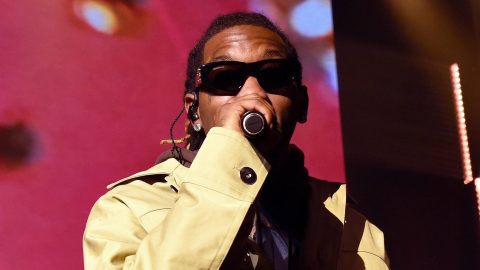
Not even COVID-19 could stop the continued success and growth of K-pop around the world this year. In the US, more and more acts landed on the Billboard charts as the months went by, and many others captured the imagination of fans across the globe, as seen in viewership of online concerts, awards shows and survival shows like Kingdom: Legendary War and Girls Planet 999. But activity in Korea suggested that the feeling was mutual, at least looking to the west, suggesting that after testing the water for a few years, the industry is now ready to go all-in on the western (and specifically American) markets.
It showed that in a number of ways. First, in 2021 it felt like there was a surge in English-language tracks being released, presumably with the hopes of making it easier to catch the attention of pop fans who might initially be resistant to listening to music in a language they don’t speak. Top artists like BTS, TWICE, Key, TXT, SEVENTEEN and more all shared English songs while MONSTA X released their second English-language album just last week (December 10). Regardless of your feelings about such a move, it at least seems like it was commercially successful for some – BTS broke chart records with ‘Butter’, while TWICE made their first entry on the Billboard Hot 100 with ‘The Feels’.
Elsewhere, agencies shared their plans to form US-based acts, with both SM Entertainment and HYBE announcing upcoming groups to be put together through audition shows. The exact benefits of having bands headquartered in America remain to be seen but – especially in our pandemic era – at the very least it will make it easier for them to promote and tour locally, and perhaps fill the hole in the pop group market in the country. Regardless of the success of that project, SM is also stepping into Hollywood with a movie featuring aespa reportedly in the works.
If those projects looked to progress K-pop’s global position, then the scene also moved forwards in the virtual space this year too. In November, the South Korean government launched Korea World – a metaverse-based online exhibition hall dedicated to the Hallyu wave. It’s unsurprising that the country is spearheading digital evolution given its reputation as a leading tech centre – a status that has long fed into K-pop’s forward-thinking nature. Not all of these so-called advancements were good, though. The jury is still out on the industry’s tiptoe into NFTs late this year, while the launch of platforms like UNIVERSE highlighted how AI technology could fuel the unhealthy side of the fan-idol connection.
Throughout 2021, change was also the order of the day. Beloved groups like GFRIEND and IZ*ONE disbanded, with some members going on to start new chapters at new companies. Other artists, like GOT7 and MAMAMOO’s Wheein, left their labels behind for fresh pastures but still promised to remain with their respective groups, as well as exploring alternative and individual creative paths. Unfortunately for some of the acts that had to call it quits this year, the end didn’t come after years of comebacks and time in the spotlight. Rookie girl group SOLIA disbanded just five days after debuting and, although their agency said the move was made mutually and in full consultation with the members, it still shone a spotlight on how harsh and fickle the music business can be.
Accountability was also a big theme in the K-pop industry over the last 12 months, although the consequences sometimes felt extreme. Allegations of bullying spread through the scene in the first half of the year, with labels either denying the claims made against their idols or sidelining them as punishment for regressions in their school years. It was good, however, to see agencies taking seriously accusations of manipulation, gaslighting and sexual coercion, echoing a shift in attitude to women’s claims around the world in recent years.
In the girl group world, it often felt like there was a lack of originality in concepts, with the girl crush angle continuing to be the dominant trend. We saw it in comebacks and debuts by the likes of ITZY, aespa, EVERGLOW, bugAboo, LOONA and more, and while they all pulled it off well, it would be refreshing to see more variety that they can make their own offered to the ladies of K-pop in 2022.
For the boys, emo and pop-punk reigned with male idols showing they could not only jump on a global trend but conquer it too. TXT used emo riffs and rock styling to exorcise their angst as they traversed young adulthood, while SEVENTEEN’s ‘2 Minus 1’ took inspiration from pop-punk queen Avril Lavigne. On his solo debut proper, GOT7’s Mark Tuan added his contribution to the movement with ‘Last Breath’, a track laced with emo-pop atmosphere.
Despite its low points, K-pop in 2021 brought the world some much-needed distraction – be that in colourful upbeat bops, sorrowful songs to wallow in or phenomenal staging that pushed forward the boundaries of performance. Here’s to another year of vibrant creativity in 2022 and, hopefully, a safe return to in-person celebrations of our fave K-pop stars.
The post In 2021, K-pop continued to flourish, virtually, globally and creatively appeared first on NME.








